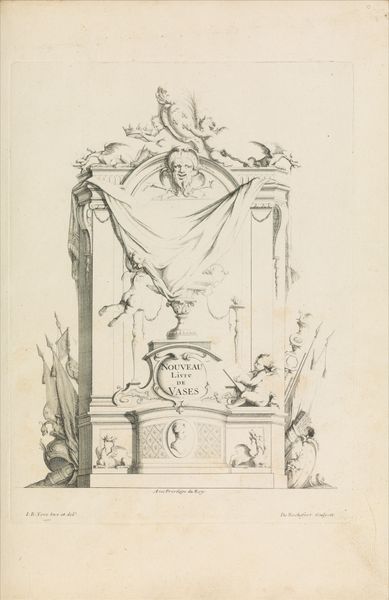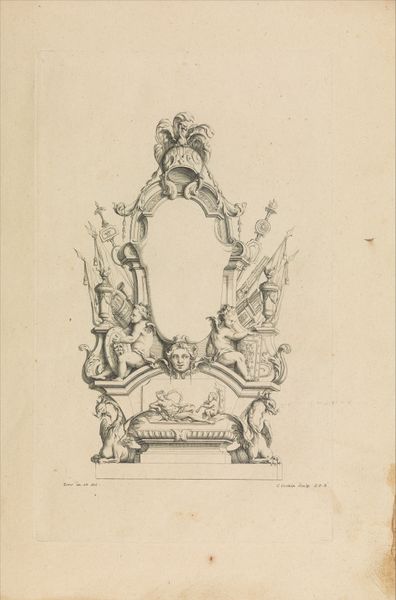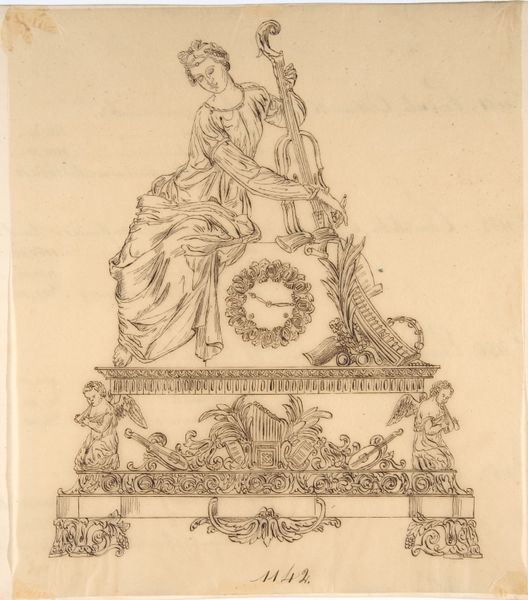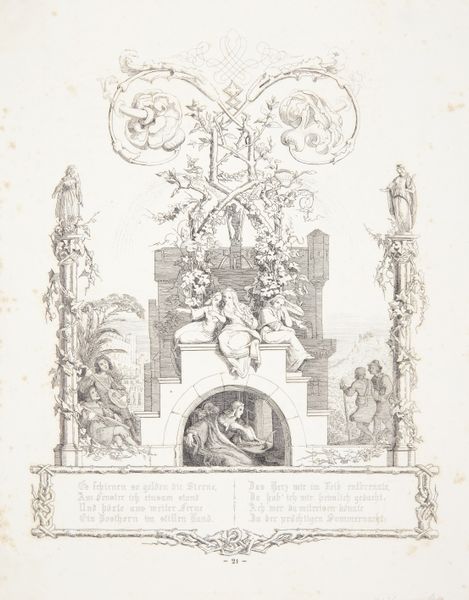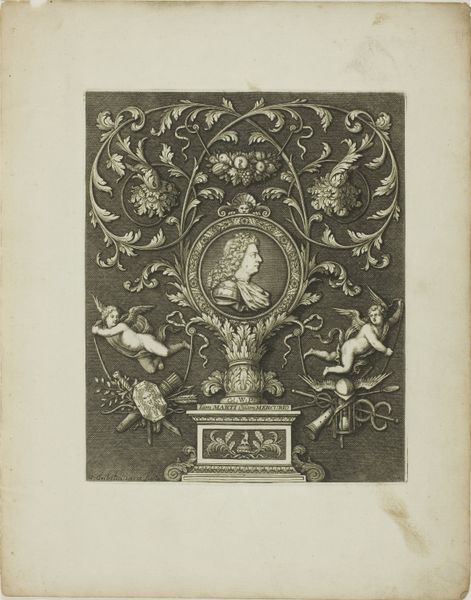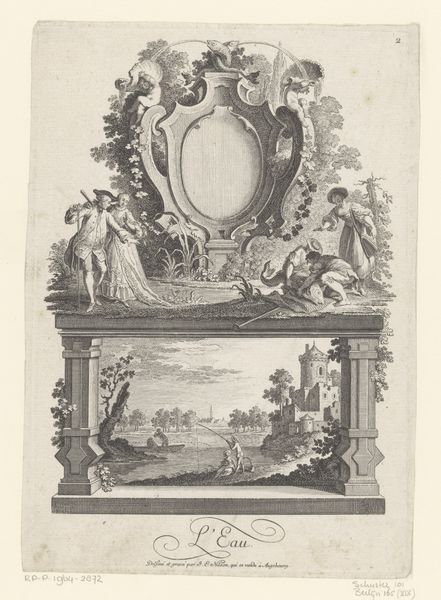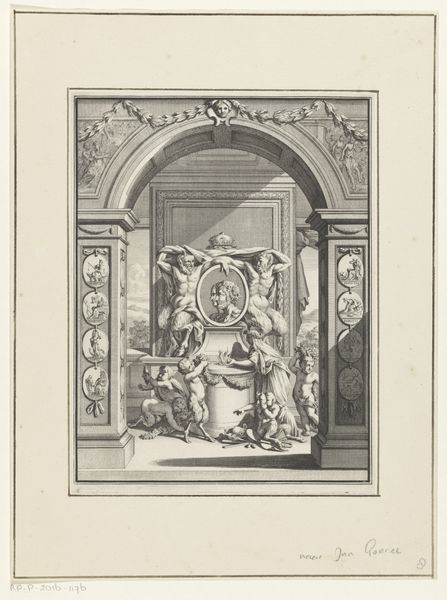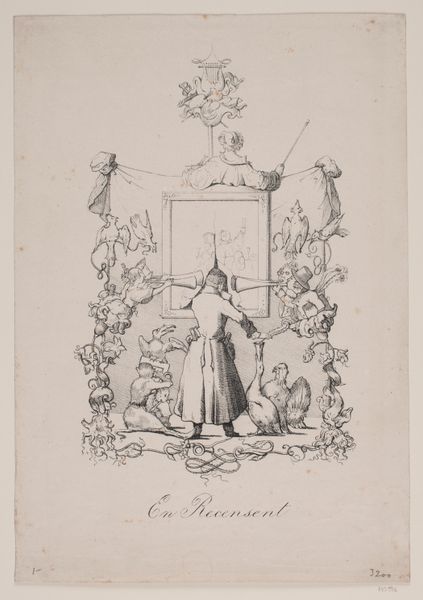
Dimensions: 17 5/8 x 13 in. (44.8 x 33 cm)
Copyright: Public Domain
Curator: This delicate rendering offers a proposal for a clock, created between 1765 and 1795. While its creator remains anonymous, we can appreciate the blend of drawing and watercolor which composes the design. What are your initial thoughts? Editor: My first impression is one of classical restraint mixed with overt imperial aspiration. The pale washes lend it a lightness, yet the eagle perched at the top is rather imposing, isn't it? Curator: Indeed. The eagle and allegorical figures flanking the timepiece connect directly to a fascination with classical antiquity and the Enlightenment’s emphasis on reason. Designs such as this clock speak to a society that revered knowledge and saw itself as heir to past empires. Clocks, after all, represent a kind of temporal control, reflecting a desire for order and progress. Editor: And who is this “progress” meant to serve, though? We need to consider who had access to these objects, to these ideologies. The presence of enslaved labor or the exploitation of the working class looms large even in these ostensibly decorative pieces, does it not? A constant, and necessary, uninvited guest to the feast of empire and the enlightenment’s project. Curator: Certainly. We cannot divorce these creations from their historical context. The rising merchant class sought validation through refined artistic expression, demonstrating their growing social and economic influence and aligning themselves with established powers. Even an object as seemingly innocuous as a clock design becomes imbued with political and social meaning. Editor: I find myself drawn to the subdued color palette. It's not the ostentatious display we often associate with wealth. Perhaps the anonymous creator sought a different, more nuanced form of signaling prestige. Maybe one that attempts a disguise to power but, regardless, is still bound by the prevailing structures and ideals of the period. Curator: Exactly! Its restrained palette and the classical motifs still resonated powerfully with its intended audience. The very act of possessing such an intricately designed object was a testament to privilege. Thank you. That’s certainly given me new perspective to share with future visitors. Editor: Likewise! This conversation has been a helpful nudge toward further intersectional contemplation about design, time, and the enduring legacy of inequality.
Comments
No comments
Be the first to comment and join the conversation on the ultimate creative platform.
